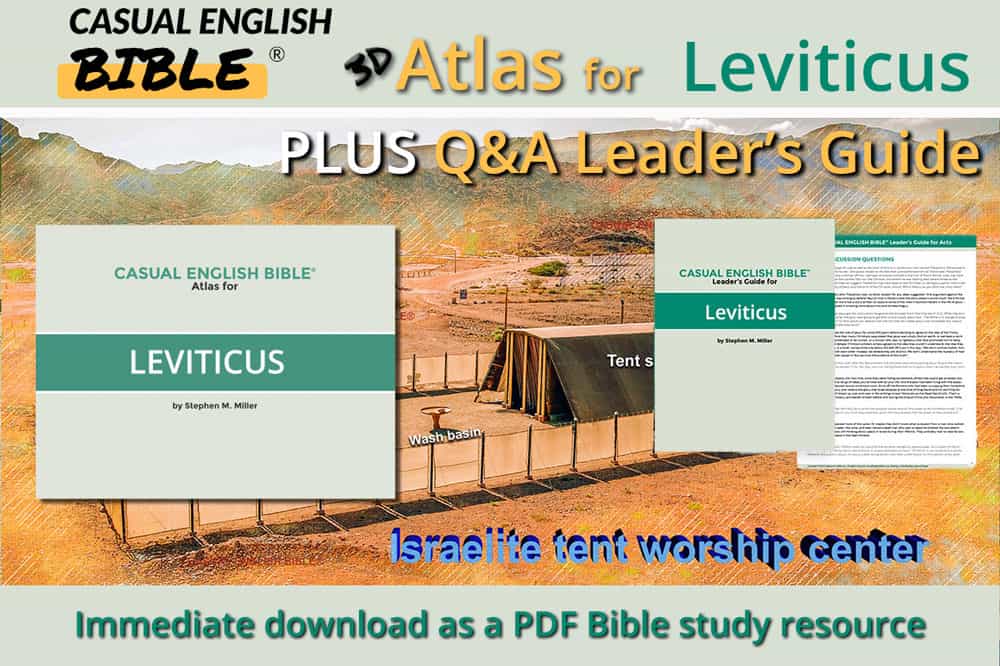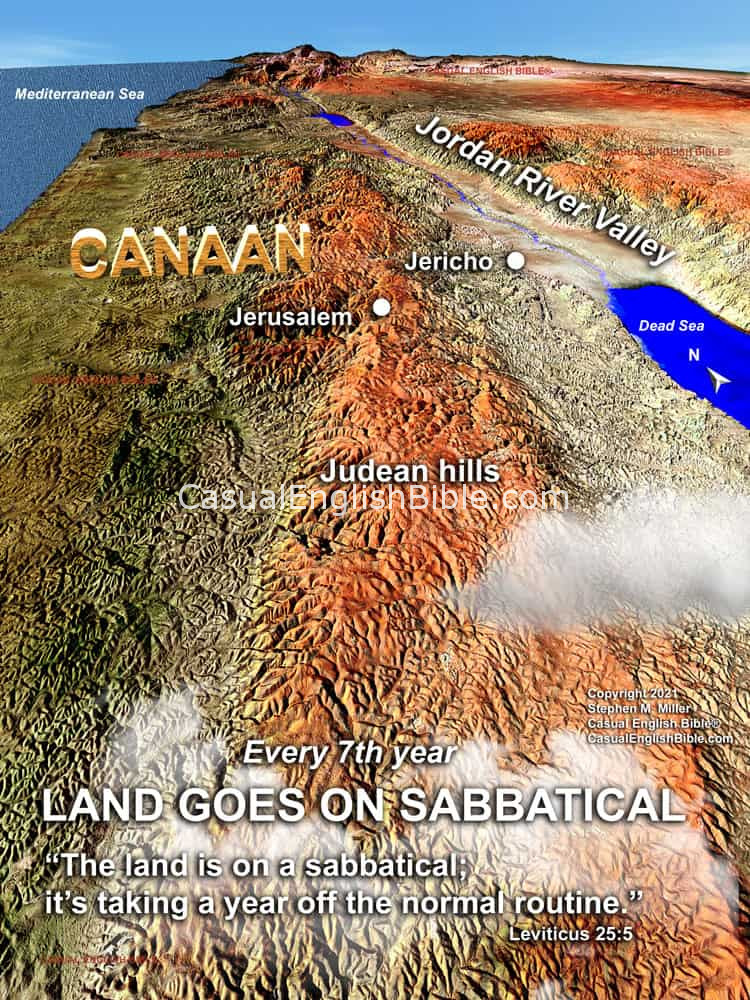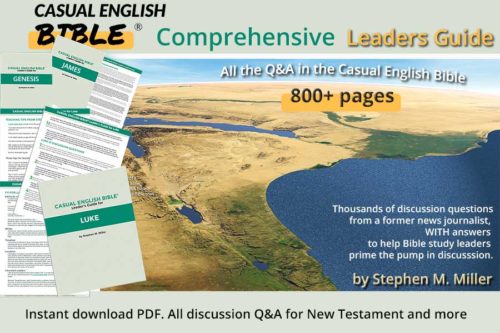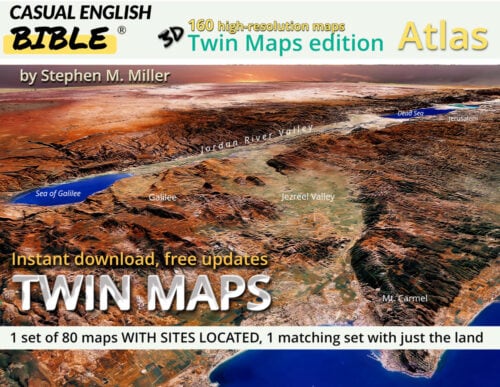Description
Preview
What you get in the Casual English Bible’s Leviticus Maps & Leaders Guide:
- Tips for teaching Leviticus in a Bible study
- Over 50 pages of discussion questions WITH answers
- 12 pages of charts and Bible maps in high resolution
- 70 PDF pages of resources, for immediate download
Sample resources in the Leviticus Guide & Atlas

Value of a sacrifice
Jews taught that in God’s eyes, sin was a capital offense. Jewish law, however, says God allowed them to substitute the death of an animal for the death they deserved. “Blood is what brings a body to life. I’ve given you blood to use exclusively on the altar. I
t atones for your sin—it gets rid of your guilt so you can stay on good terms with the LORD. Blood is the price of your sin” (Leviticus 17:11).
The writer of Hebrews says the blood of Jesus was the last sacrifice needed; it paid the price for the sins of all people for all time (Hebrews 10:10).
Grain offerings
Grain offerings were an expression of gratitude for a harvest and for the way God takes care of the Israelites. People offered the grain in several ways: ground to fine flour, presented as baked, fried, cooked, or roasted with olive oil.
Peace offerings
A peace offering is one of several prescribed offerings in Jewish tradition. When Jewish people wanted to give thanks to God for something, such as good health or safety, they would sacrifice a sheep, goat, cow, or bull. They would burn part of the animal, including the kidneys and fat covering the intestines.
They would eat the rest in celebration, often with family and friends. It takes a fair number of hungry people to eat a cow. But people were eager to eat meat because it was rare in Bible times for common folks to eat meat, many Bible scholars say.
 A year off for the land
A year off for the land
Moses told the Hebrew refugees on their way to what became Israel that once they got there, they had to give the land a year off every seventh year.
“For six years you can plant your fields and prune your vineyards. And you’re free to harvest everything you grow. But in the seventh year, give the land a Sabbath kind of rest, in honor of the LORD. Don’t plant anything and don’t prune your vineyard. Just let everything grow on its own.
When it seems time to harvest the plants that grew on their own, don’t do it. I don’t want you to treat this like any other harvest, by selling it or storing it for later.
The land is on a sabbatical; it’s taking a year off the normal routine. You can eat the crops that grow on their own. But treat them as food for yourself and for anyone who wants it.
You are to share these crops with your slaves, hired help, immigrants living among you, and strangers in the land. Even the livestock and wild animals can help themselves to anything they want to eat.” (Leviticus 25:3-7).
In addition to the Leviticus Bible Atlas
You might consider the atlases and leaders guides for
Best resource for comparing other Bible translations: Bible Gateway. This isn’t an ad. It’s a recommendation from the Casual English Bible.
To support the work of paraphrasing the Casual English Bible and keeping it free online:









